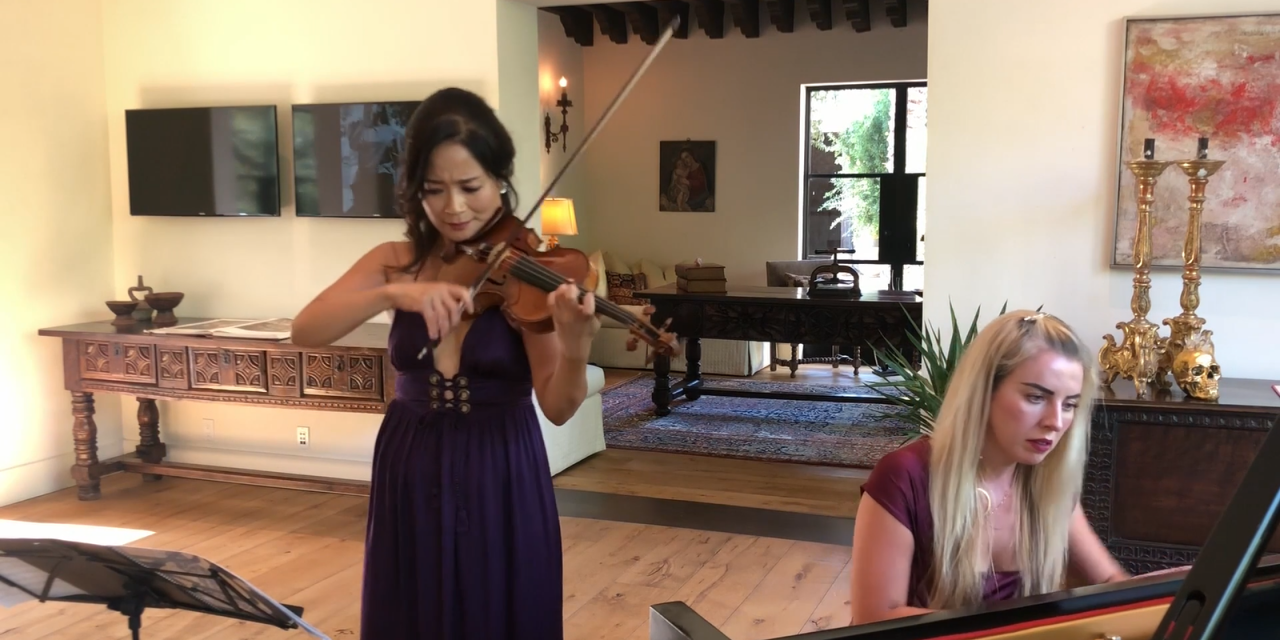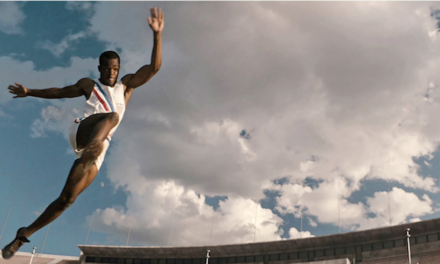Traditionally, a classical concert at Emory or elsewhere usually takes up the greater part of one’s afternoon or evening. From getting dressed to finding a seat, such a concert can be a time-consuming affair. This, however, wasn’t the case with Emory Chamber Music Society of Atlanta’s pre-taped All-Star Trio virtual concert on Jan. 23.
Uploaded as a video on the Schwartz Center Virtual Stage, the concert began with an introduction filmed at the Schwartz Center for Performing Arts before pivoting to the actual performance, which wasn’t shot at Emory or even in Atlanta. Due to the COVID-19 pandemic, the trio of violinist Chee-Yun, cellist Zuill Bailey and pianist Natasha Paremski instead filmed at a private residence in El Paso, Texas, after having quarantined for 10 days each and testing negative.
The concert featured performances of violin sonatas written by César Franck and Johannes Brahms, as well as a few individual selections for a piano trio out of the repertoire of Argentinian composer Astor Piazzolla. Piazzolla is not necessarily as well known as Brahms and Franck, who while not necessarily on the Mount Rushmore of classical composers, are still giants within the field. Piazzolla blended elements of jazz and tango with classical music to create a unique mixture that would go on to inspire the Nuevo Tango style in Argentina.

Violinist Chee-Yun and pianist Natasha Paremski performing one of the sonatas. (Schwartz Virtual Stage)
The performance of Brahms’ and Franck’s violin sonatas was bookended by four Piazzolla pieces, available only during the synchronous concert, beginning with selections from his “Cuatro Estaciones Porteñas” and finishing with two distinctive pieces: “Le Grand Tango” and “Oblivion.” The Piazzolla sections were the only ones in which Grammy-winning cellist Bailey participated.
Many of the Piazzolla pieces were not originally written for piano trio, and hearing them played on traditional instruments like the piano, violin and cello was an interesting contrast. The Latin-classical style of the Piazzolla also provided a nice contrast to the Brahms and the Franck sonatas, as Brahms and Franck both fall firmly within the classical era as opposed to Piazzolla’s modern approach.
While Piazzolla’s pieces varied in tone, there was a liveliness and excitement the trio brought out, which is more present in modern classical music as well as South American classical styles, and not usually found in pre-modern European styles. Brahms’ piece was played with more reserve than most musicians can muster, as many usually add too much bombast to his works. The trio performed them with the requisite climactic intensity, but the natural fast and furious temperaments were kept in check. Often considered one of the best sonatas written for the violin and piano, the Franck sonata lived up to its reputation in the iteration presented by Chee-Yun and Paremski, which made for the best part of the concert. It was the most demanding piece performed in terms of technique, but it was played error-free and energetically throughout.
The concert’s videography was also creative. Going in, I expected a single camera angle filming the entirety of the concert, but the videographers effectively switched angles to keep viewers engaged. Shots sometimes focused on the performer with the dominant musical line, which allowed viewers the rare opportunity to experience the music up close.
The All-Star Trio concert admirably kept the technical aspects of the performance compelling and it offered a promise that despite an unorthodox virtual medium, music performances will continue to thrive in the coming months.
Caleb Jones (23C) is from Chapel Hill, North Carolina. In his free time he enjoys sports, politics and reading. Contact Jones at caleb.emrys.jones@emory.edu.






